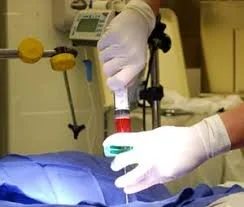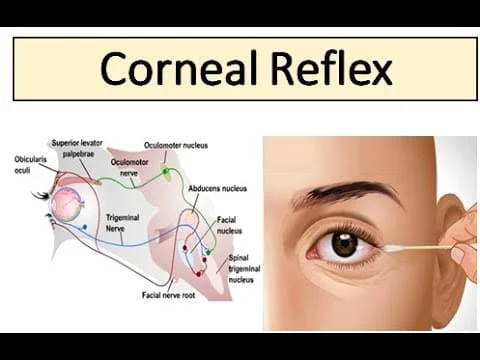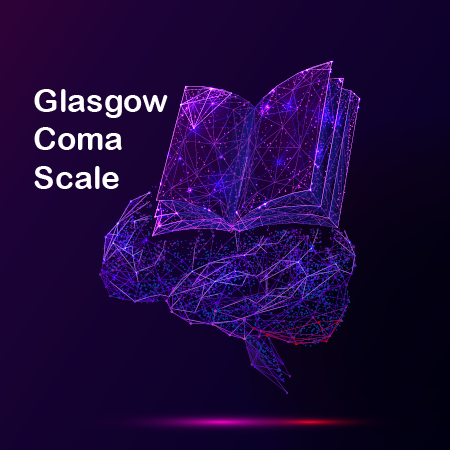Bone Marrow Tests
Table of Contents
Introduction
A bone marrow test is used by your doctor to examine the fluid and tissue in your marrow. The tests aid in determining whether cancer or another disease is affecting blood cells or bone marrow, as well as the severity of the disease. Some blood cell changes can be detected in marrow samples before they appear in blood samples.
A bone marrow aspiration and a bone marrow biopsy are usually required for bone marrow testing. A liquid marrow sample is extracted using a bone marrow aspiration. A bone marrow biopsy is used to extract a small amount of marrow-filled bone. Both tests are typically performed concurrently in a doctor’s office or a hospital.
The tests are designed to:
- Confirm a blood cancer or bone marrow disorder diagnosis
- Find out what’s causing your severe anaemia or thrombocytopenia (low platelet count).
- Detect abnormal chromosomes to assess your risk and plan your treatment.
- Assess your response to therapy.
- Assist in tracking your progress during treatment.
What is bone marrow?
The hollow centre of your larger bones contains bone marrow. Bone marrow is made up of a liquid and soft, sponge-like tissue.
The bone marrow tissue generates:
The red blood cells are the cells responsible for transporting oxygen throughout your body.
White blood cells: Immune cells that defend your body against germs and infectious diseases.
When your blood vessels are damaged, platelets form clots to stop the bleeding. Blood vessels are tubes that circulate blood throughout your body and include arteries, veins, and capillaries.
Stem cells, or maturing blood cells, are found in the liquid part of bone marrow. It also produces vitamins that are required for cell production.
A bone marrow biopsy examines the tissue portion of your bone marrow, whereas a bone marrow aspiration examines the liquid portion. Your provider will most likely perform a bone marrow aspiration immediately before the biopsy on the day of your procedure.
Bone Marrow Test classifications
There are two forms of bone marrow tests:
- Aspiration of bone marrow
- trephine biopsy of bone marrow
A doctor or nurse will aspirate some liquid bone marrow into a syringe.
A bone marrow trephine biopsy involves the removal of a single piece of a very thin 1 or 2-cm-long core of bone marrow.
Both of these tests are usually performed at the same time. They give the doctor some of the same information, but some differences exist. The bone marrow trephine reveals the structure of the bone marrow within the bone, whereas aspiration removes only the bone marrow cells.
How do you prepare for bone marrow tests?
Bone marrow exams are frequently performed as an outpatient procedure. Usually, no special preparation is required.
If you will be sedated during the bone marrow exam, your doctor may ask you to refrain from eating and drinking for some time before the procedure. You’ll also need to arrange for someone to drive you home after the event.
Additionally, you may want to:
Let your doctor know if you use any vitamins or prescription drugs. Certain medications and supplements may increase your chances of bleeding following a bone marrow aspiration and biopsy.
Inform your doctor if you are nervous about the procedure. Discuss your exam concerns with your doctor. In some cases, your doctor may administer sedative medication before your exam, as well as a numbing agent (local anaesthesia) at the site where the needle is inserted.
What takes place during a bone marrow test?
Bone marrow aspiration and biopsy generally occur at the same time. The marrow samples will be collected by a healthcare provider for testing. The samples are usually collected in about ten minutes.
You may be asked to put on a hospital gown before the procedure. Blood pressure, heart rate, and temperature will all be measured.
You could take a mild sedative, which is a medicine that helps you relax. You may also have the option of taking a stronger sleeping medication. Your provider can assist you in determining which option is best for you.
Following the procedure:
Depending on which bone is used to obtain the samples, you will lie on your side or stomach. The iliac crest, located at the back of the hip bone, is where the majority of bone marrow samples are collected. Other bones, however, may be used.
An antiseptic will be applied to the skin over the bone.
You will be given a medicine injection (shot) to numb the skin and bone beneath. It might sting.
The provider will make a very small incision (cut) in your skin and insert a hollow needle once the area is numb. You have to remain completely silent throughout the procedure:
- Typically, bone marrow aspiration is performed first. The provider will insert a needle into the bone and extract bone marrow fluid and cells with a syringe attached to the needle. You may experience a brief, sharp pain. It only takes a few minutes to aspirate.
- A special hollow biopsy needle inserted through the same skin opening is used for the bone marrow biopsy. The provider will twist the needle into the bone to extract a small piece of bone marrow tissue, known as a core. While the sample is being taken, you may feel some pressure or pain.
Following the test, the healthcare provider will apply a bandage to your skin.
If you did not use medication to relax or sleep, you should lie down for about 15 minutes to ensure that the bleeding has stopped. After that, you can resume your normal activities as soon as you are able. If you take medication to relax or sleep, you will have to stay longer before you can go home. You may also need to rest the following day.
Next to your bone marrow test
If you’re feeling well enough, you can usually go home the same day.
You have a dressing over the wound that should be left on for 24 hours. Apply pressure to the area if you notice any bleeding. Contact the hospital if it does not stop.
Your hip may ache for a few days after the test. You may require some mild pain relievers at home, such as paracetamol.
Because you’ll be sedated, you’ll need someone to accompany you home and stay with you overnight. You should also not drive, drink alcohol, operate heavy machinery, or sign any legally binding documents for the next 24 hours.
Uses of the Bone marrow tests
Bone marrow tests are used to determine:
- Determine the source of red blood cells, white blood cells, or platelet problems.
- Diagnose and track blood disorders like:
- Anaemia (when the aetiology is unknown)
- Vera Polycythemia
- Thrombocytopenia
- Identify bone marrow disorders
- Diagnose and monitor treatment for cancers such as leukaemia, multiple myeloma, and lymphoma.
- Determine the cause of an unexplained fever, which could be caused by a bone marrow infection.
Risks of undergoing a bone marrow test
A bone marrow test is extremely safe, with only minor risks.
There is a very small chance that nearby structures will be damaged during the procedure, but this is extremely unlikely.
Bleeding
A small amount of bleeding from the area where the needle was inserted is not uncommon. Apply pressure to the area if you notice any heavy bleeding. Contact the hospital if it does not stop.
Bruising
Sometimes blood leaks from the vein and collects beneath the skin. This can appear as a small dark swelling beneath the skin (haematoma). When the needle is removed, pressing hard can help.
Infection
There is a slight risk of infection in the wound. If you develop a fever or the area becomes red and sore, contact your doctor.
Pain
After the local anaesthetic has worn off, some people experience discomfort and pain. Your nurse will advise you on which pain relievers to take. If your pain is severe or worsening, you should seek medical attention.
Tingling sensation in your leg
You may experience tingling in your leg, which will subside with time.
Finding your results for bone marrow tests
The laboratory examines your bone marrow test. The time it takes to receive results is determined by the tests performed on the bone marrow samples.
Basic results can be obtained in as little as 24 to 48 hours. Whereas genetic tests on bone marrow samples, for example, can take several weeks to produce results. You will not receive any results when your bone marrow is extracted. It is best to inquire with your doctor or nurse about how long it will take to obtain them.
Waiting for test results can be stressful. You may have the contact information for a specialized nurse. If you require information or assistance, you can contact them. It may also be beneficial to discuss your feelings with a close friend or relative.
Summary
A bone marrow test is a medical procedure used to examine the fluid and tissue in the bone marrow, helping to determine the severity of a blood cancer or bone marrow disorder. It involves a bone marrow aspiration and a bone marrow biopsy, which are typically performed concurrently in a doctor’s office or hospital.
The tests are designed to confirm a blood cancer or bone marrow disorder diagnosis, find out what’s causing severe anaemia or thrombocytopenia, detect abnormal chromosomes, assess treatment response, and track progress during treatment.
There are two forms of bone marrow tests: aspiration of bone marrow and trephine biopsy of bone marrow. Both tests are typically performed concurrently, and preparations include avoiding food and drinking, informing the doctor about medications or supplements, and discussing exam concerns.
Bone marrow tests are used to determine the source of red blood cells, white blood cells, or platelet problems, diagnose and track blood disorders like anaemia, vera polycythemia, and thrombocytopenia, identify bone marrow disorders, diagnose and monitor treatment for cancers, and determine the cause of unexplained fever.
Bone marrow tests can take 24 to 48 hours to obtain results, with genetic tests taking weeks. Consult a doctor or nurse for information and support, as waiting can be stressful.
FAQs
Apply pressure to the area if you notice any bleeding. Contact the hospital if it does not stop. Your hip may ache for a few days after the test. You may require some mild pain relievers at home, such as paracetamol.
The results may reveal the cause of anaemia (low red blood cell count), abnormal white blood cell count, or thrombocytopenia (low platelet count). Conditions under which the test may be performed: A fungal infection that spreads throughout the body (for example, disseminated coccidioidomycosis).
There are two methods for collecting bone marrow samples for testing: A small amount of bone marrow fluid and cells are removed during bone marrow aspiration. A bone marrow biopsy involves the removal of a small piece of bone and bone marrow.
Bone marrow can be found in the centre of most bones as well as at the ends of spongy bones in your body. Bone marrow and blood vessels fill cavities in your bones, storing fat and stem cells while also producing blood cells that make up your entire blood.
When compared to normal blood tests, the biopsy is performed with a slightly larger needle. To enter the bone at the back of the hip, a larger needle is required. Following the biopsy, the hole in the bone will immediately begin to heal, and complete healing is expected within 1 to 2 weeks.
References:
- Bone Marrow Cancer | How A Bone Marrow Test Works | LLS. (n.d.). https://www.lls.org/treatment/lab-and-imaging-tests/bone-marrow-tests
- Bone marrow test. (n.d.). Tests and Scans | Cancer Research UK. https://www.cancerresearchuk.org/about-cancer/tests-and-scans/bone-marrow-test
- Bone Marrow Tests. (n.d.). https://medlineplus.gov/lab-tests/bone-marrow-tests/
- Professional, C. C. M. (n.d.). Bone Marrow Biopsy. Cleveland Clinic. https://my.clevelandclinic.org/health/diagnostics/17735-bone-marrow-biopsy
- Bone marrow biopsy and aspiration – Mayo Clinic. (2022, December 1). https://www.mayoclinic.org/tests-procedures/bone-marrow-biopsy/about/pac-20393117
- Bone Marrow Biopsy. (2021, August 8). Johns Hopkins Medicine. https://www.hopkinsmedicine.org/health/treatment-tests-and-therapies/bone-marrow-biopsy





